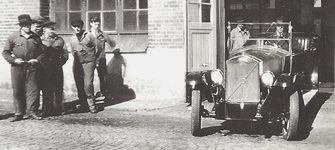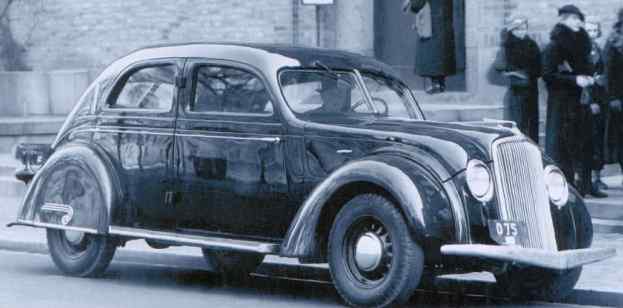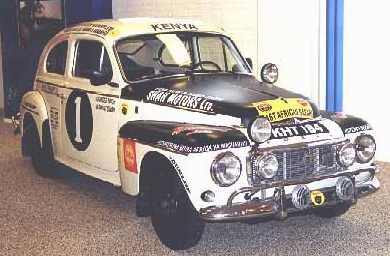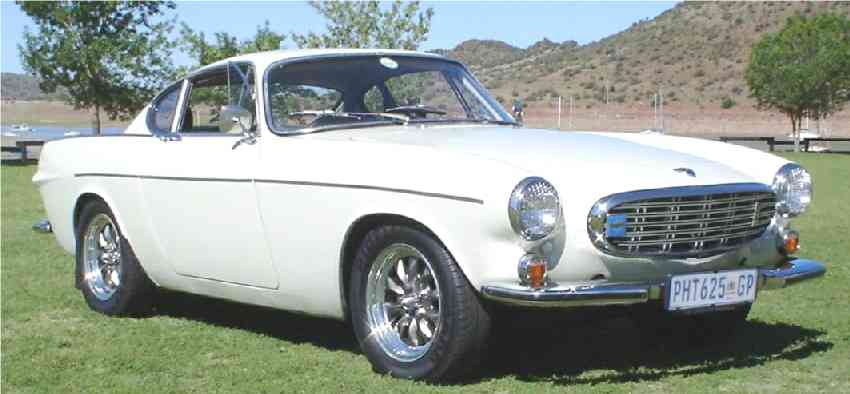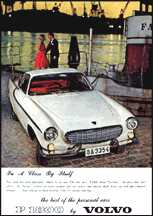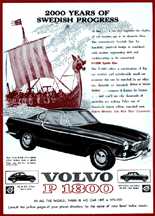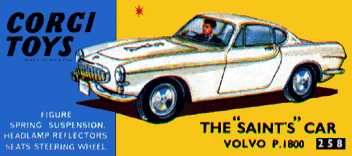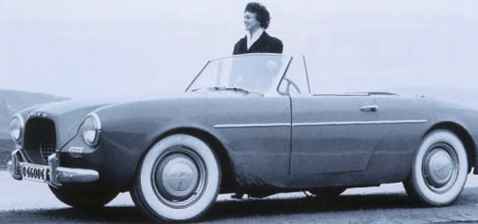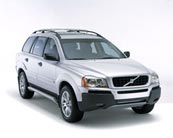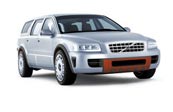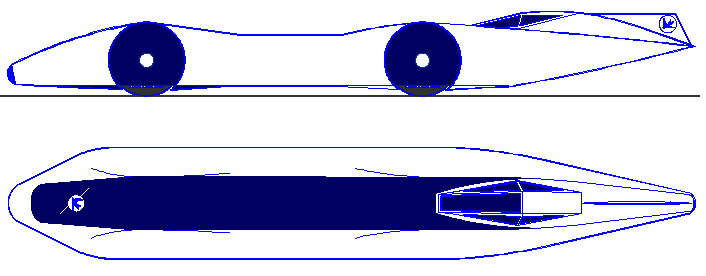|
VOLVO
|
|||||||||||||||||||||
|
HOME | AUTOMOTIVE | BLUEPLANET | ELECTRIC CARS | FORMULA E | ENERGY | INSURANCE | INDEX | SOLAR CARS |
|||||||||||||||||||||
|
Volvo means 'I Roll' in Latin, and the arrowed Circle is merely the conventional map sign for steel - Sweden's most famous industry before iKEA came along. The circle and arrow represent the shield and spear of Mars, which are also an alchemical symbol for iron. Each of the "classical" planets was associated with a metal: Sun=gold, Moon=silver, Mercury=quicksilver, Venus=copper, Mars=iron, Jupiter=tin, Saturn=lead.
On May 11, 1915 AB Volvo submitted an application to have the trade mark 'Volvo' registered as a name for several different products. Then on July 25, 1924 when Gustaf Larson and Assar Gabrielsson met by chance over a plate of crayfish, and after enjoying their meal agreed to start up production of 'The Swedish Car'. So it was in June 1926 the first prototype cars left Galco's premises in Stockholm. That said, Volvo considers April 14, 1927 as being the date when the company was born. This is because on this day the first car “Jakob” left the factory in Gothenburg, Sweden.
Volvo 1927
Founded by Assar Gabrielsson and Gustaf Larsson, the company was formed on a background of quality and safety which were both of paramount importance, a concept that still applies to the Volvo cars of today. The fledgling company produced both closed top and cabriolet models of their new four-cylinder OV4 and PV4 models, which were constructed to better withstand the harsh Swedish climate, than contemporary US imports. Both carried the Swedish symbol for iron attached to a diagonal piece if metal on the front grille – another aspect of Volvo’s heritage that can still be seen on today’s models.
In 1929 a six-cylinder PV651 model had been introduced which was both longer and wider than the Jakob. Its success helped the company to purchase its engine supplier and buy its first factory and by the end of 1931 return it’s first dividend to shareholders. The first production milestone of 10,000 Volvo’s was reached in May 1932 and it was not long before Volvo dealers were asking the company to develop a more inexpensive car ‘for the people’. This was the PV 51 model of 1936, similar to the more expensive PV36 in design, but smaller in size and less well equipped.
Volvo PV51 1936
VOLVO TRUCKS
The 1920s was a period of rapid progress for trucks and truck transport. In the early years of the decade, trucks were very old-fashioned, often fitted with chain-drive systems and solid rubber tyres. Drivers were all too often exposed to fluctuations in temperature and the elements. When the first Volvo truck rolled off the production lines in 1928 it was, however, shaft-driven, had pneumatic tyres and the driver sat in a fully enclosed cab.
Even at this early stage in truck development, Volvo trucks were built to a very high standard in terms of their reliability and quality, especially compared to non-Swedish trucks, which had not been designed with the poor Swedish climate and poor Swedish roads in mind. Right from the start, a Volvo truck was considered to be (and in fact was) fairly expensive (something that also applied to Volvo cars). Customers chose a Volvo generally for its to superior quality and ruggedness in spite of its higher price.
Volvo Truck 1928
By the autumn of 1926, Volvo management was already aware that the choice of a small four-cylinder engine had not been very wise step. The development of a straight in-line six-cylinder engine was begun, by simply taking the existing four-cylinder ’DA’ engine, adding two cylinders, thus creating Volvo’s first six-cylinder engine, the ’DB’.
WARTIME PRODUCTION
The Second World War significantly restricted Volvo’s production of cars, but by the autumn of 1944 the company had unveiled one of its most significant cars – the PV444. Volvo’s first ‘true’ small car, its stylish design combined American flair with European size and it was an instant success. The PV444 and the PV544 would dominate Volvo production through to the mid ‘60’s and be the first models to gain Volvo a slice of the important US market during the 1950’s.
Volvo PV544 Safari
Another popular model was the Volvo 120 introduced in 1956 and often called the Amazon. Safety features and accident protection were a key factor in this cars design and this was enhanced even further in 1959 when both the Amazon and PV544 were equipped with three-point safety belts – a world first and an invention pioneered by Volvo’s head of safety engineering, Nils Bohlin.
VOLVO'S SECOND SPORTS CAR
Volvo’s first sports car was the P1800, unveiled in 1960. Considered to be an excellent touring car with it’s sleek coupe lines, the P1800 went on to find fame in “The Saint” TV series with Roger Moore behind the wheel. By 1964 Volvo had opened a new production plant in Torslanda, Sweden capable of producing up to 200,000 cars a year and by 1966 the Volvo 140 family was introduced firstly as a saloon and later as an estate, helping to cement a family market that Volvo was rapidly claiming as its own.
A 1969 Volvo 1800s Courtesy of the owner: Deon van Loggerenberg South Africa
THE SAINT TV SERIES
The
Saint was at a peak of popularity in the 1960's. The Saint
television show, starring Roger Moore and his Saintly white Volvo 1800,
was a big hit. In 1966 Corgi repainted their Volvo P1800 models in white,
and added a Saint logo to the hood, as a testament to the success of the
show. Saint Roger Moore The Volvo Car Corporation supplied the "The Saint" television producers a total of five P1800 models for use on their show. Volvo happily supplied the first one in 1962, registered as 71 DXC, within a week of its being requested. In 1964, Volvo moved production of the P1800 line from England to Sweden, and sent one of the new 1800S models, registration 77 GYL, to the set of "The Saint&qout;. The first car was then chopped up for better interior shot access.
Volvo 1800 - Roger Moore as The Saint
Three years later, in 1967, Volvo supplied yet another car. This car, however, didn't get much use as it was wrecked in a crash fairly soon after its arrival. The production company did manage to salvage some of the parts, and used them to update the 1964 car with the new straight bumpers, chrome, and more modern trim rings for the wheels.
A short time after the crash, Volvo supplied two more cars. One, registered as NUV 647E, was used for Roger Moore's personal use, and the other, NUV 648E, was used for filming. If you would like to see one of the cars, the "Cars of the Stars" museum in Keswick, England has the official 'Saint' car on display. Their car is the fully restored 1964, registration 77 GYL, with a giant Saint logo on the hood.
The Saint TV Series and Hirondel
In the Saint books by Leslie Charteris, Simon Templar drove a Hirondel. The problem that the television producers had when they started to produce the 1960's Saint TV series was that the Hirondel was a fictional car. They decided to go with a contemporary car, and had two hot new sports cars to choose from: the Volvo P1800 or the Jaguar XK-E. Volvo was happy to supply a beautiful white P1800 for the show, leaving Jaguar to regret their decision not to provide a XK-E (something they rectified in the 1970's by giving The Return of The Saint show a white XJ-S).
VOLVO P1800 ADVERTS
Innovations in safety and environmental care continued apace with crumple zones, rear facing child seats, collapsible steering columns, side collision protection and the three-way catalytic converter with Lambdasond all being introduced on Volvo’s in the late 1960’s and early 1970’s. The Volvo 240 range replaced the 140 with even higher levels of safety and quality and was joined by the smaller Volvo 340 models from Holland to take Volvo’s sales past the 4 million mark by the end of the 1970’s.
In turn the Volvo 700 series of 1982 took Volvo yet another step into the exclusive market for personalised high-quality cars. Later in the decade the 340 was replaced by the Volvo 400 series which won plaudits for its roadholding and safety as well as its generous amount of interior space. A completely new and different Volvo was launched to the world in June 1991. The Volvo 850 was Volvo’s first front wheel drive executive car, with a transverse, five-cylinder engine. Its high level of safety combined with real driving pleasure won the car many independent awards.
The proposed merger with Renault fell through in its final stages in 1993 leaving Volvo as one of the few remaining independent car manufacturers. This marked a key turn in the company’s plans and paved the way for Volvo’s new dynamic product strategy with the introduction in 1996 of the sleek and more rounded designs of the Volvo S40 and V40. They, like the Volvo C70 coupe and convertible that were introduced later that year, were cars that combined all of Volvo’s traditional values of safety, environmental care with sporty, elegant and exciting design and engineering.
A
touch of sporting credibility crept into the range in 1992 with the 850,
which was launched with the slogan "a dynamic car with four
world-beating breakthroughs". These four breakthroughs were
transverse-mounted five-cylinder engines (2.0-litre, 2.3 turbo, 2.5-litre
and 2.5 TDI turbodiesel), a new Delta-link rear axle, Volvo's SIPS Side
Impact Protection System, including a world first, side airbags, and a
self-adjusting front seat belt mechanism. The picks of the 850 range were
the T5 (225 bhp) and 850R (250 bhp) estates, which quickly became known as
"the flying bricks", especially when liveried up in the colours
of local police forces, or on the track in the 1994 BTCC Championships,
and the 2.5 AWD estates with full-time four-wheel drive, the 193 bhp
light-pressure turbo engine, a variable viscous coupling, traction control
and air suspension remain sought-after too. The 850s were the best-driving
Volvos yet, and marked a new focus of the brand on performance as well as
pragmatism. "It heralded the start of a new era. Safety, reliability
functionality and environmental concern, all the famous world-famous
virtues, were wrapped up in a dynamic package that would gradually change
the image of Volvo during the rest of the '90s", said Volvo. Replacing the 440/460 in 1996, and continuing today, the S40 saloon and V40 estate embodied this image change, particularly the neat, compact V40 (it's best to forget that these models share all but their body panels and superficial styling with the inappropriately-named Mitsubishi Carisma, under a collaboration and production agreement). Though well-specified with both safety and comfort features, these models weren't particularly inspiring or refined to drive at launch - their disappointing press reception caused the odd head to roll. But they've been improved over the years - they needed it - and still look smart, modern and more upmarket than some mainstream contenders in their class. And the T4 turbo is one of the fastest and most unlikely sports saloons about, though it's pretty much out-classed now.
The
Saint's Volvo C70 Coupe
The latest marriage of The Saint and a Volvo, the C70 debuts at the International Automobile Show, in France on October 1, 1996. It will be Volvo's first true sports coupe since the popular P1800 series, and just in time for the new Saint movie (Val Kilmer drives a red one in the upcoming Paramount picture). Styled by Volvo's chief of design Peter Horbury, the C70 draws from Volvo's past, present and future. Horbury incorporated the traditional sloping 'V' hoodline and shouldered door panels from the P120 series, the P1800's rakish rear window and body site-line, along with today's 850 front styling, and the future of Volvo styling into a Coupe unlike any Volvo ever before.
CORGI TOY
Borrowing from the proven 850 series, the C70 utilizes the 850 platform, engine, drivetrain, suspension. In total the Coupe shares the same wheelbase as the 850 but is two inches longer making this an honest four seater. New for the C70 will be a manual transmission coupled to a 2.4 liter turbocharged 230 hp, five cylinder engine. Some of the standard safety features are: dual front air bags, side impact protection system (SIPS) that includes the worlds first front occupant side impact air bags, pyrotechnic seat belt pretensioners and headrestraints in all four seating positions. By 1998 the C70 Coupe was on sale at Volvo dealers everywhere.
The convertible version, Volvo's first drop-top since the P1900, appeared in 1999, but has failed to make a convincing rival to the long-running, best-selling Saab 900 soft-top. Why did it take Volvo so long to make sporty cars again? Its financial situation: maintaining its independence in a market dominated by huge global corporations was becoming increasingly difficult, and in 1999 it was finally receptive to a takeover from the Americans. Volvo was bought by Ford Motor Company, and became one of its Premier Automotive Group (PAG) brands alongside other acquisitions, Jaguar and Aston Martin.
With the Volvo S80 sedan of 1998 and the V70 wagon of 1999, all of this new engineering and design was brought together in a cars that both Gustaf Larson and Assar Gabrielson would have recognised as Volvo’s that represented their wishes for safe, quality products, but that can hold a fascination and desire for customers in today’s sophisticated car market.
The 2000's Models
The V-sign
THE NEW VOLVO V70 - AN ESTATE FOR THE TWENTY-FIRST CENTURY
2000
A lot is happening within the company, including: Hans-Olov Olsson becomes President and CEO of Volvo Car Corporation. King Carl XVI Gustav opens the Volvo Cars Safety Centre. Volvo's Road Accident Research Team has its thir-tieth birthday. Volvo Cars sells its share of NedCar in the Netherlands to Mitsubishi. At the end of the year, Volvo Cars acquires TWR's share of the Uddevalla plant, where the Volvo C70 is made.
2001 - The Year of Refinements
After launching more new models in a single year than ever before in 2000, Volvo Cars' work in 2001 is focused on development and new technology solutions. The Volvo Cars Safety Centre is also developed, and Volvo Cars now has superior crash test capabilities in its crash laboratory. Using the new movable test track, two-vehicle crash-tests can be staged from all possible angles at any speed.
A NEW GENERATION OF ENGINES
Volvo Sport 1955
THE VOLVO S60 AWD IS LAUNCHED
-
Wheel speed
OTHER ADVANCES
2002
Volvo XC90 - the next generation SUV
The Volvo XC90 is also the only vehicle in its size class which is offered with forward-facing seats for seven people in three rows. From the outset, buyers were offered the choice of a five or six-cylinder petrol engine or a five-cylinder turbodiesel.
Volvo S60 R and VOLVO V70 R unveiled at the Paris Motor Show 2002.
Volvo Car Corporation celebrated the 75th anniversary of its founding with a banquet for 500 guests. Amongst them were HRH Carl XVI Gustaf of Sweden and the actor Roger Moore. At the end of the Volvo Ocean Race, the German yacht illbruck Challenge skippered by John Kosteck was watched by a jubilant crowd as it crossed the finishing line in Kiel. Just before the last leg, the race fleet made a memorable stopover of several days in Volvo’s home city, Gothenburg.
Volvo Concept car Chicago 2001
2003
The Volvo S80 was launched with both exterior and interior changes. The Volvo S80 was now available for the first time with AWD (all-wheel drive). The major event in 2003 was the launch of the new generation Volvo S40 at the Frankfurt motor show. The new S40 is somewhat shorter, wider and taller than its predecessor. The exterior puts the emphasis on sporty, dynamic appeal. The interior has an entirely new design language, clearly anchored in Scandinavian heritage. For the first time, Volvo is offering 5-cylinder engines in this size of car, with power outputs from 140 bhp all the way to 220 bhp. The new Volvo S40 boasts an extremely high safety level, with features such as an entirely new patented frontal structure with several crumple zones and a body that is almost 68% more torsionally rigid than before. Side-impact protection is of the same type as found on Volvo’s larger models.
The next new model was the Volvo V50, a sports wagon that replaces the Volvo V40. The V50 was unveiled at the end of 2003 and entered the showrooms during the first half of 2004.
At the Geneva motor show, Volvo surprised everyone by pulling the wraps off an entirely new concept model called the VCC, Versatility Concept Car - a vision of the future showing a premium-class estate car. The VCC has a number of innovative features, not least as regards comfort and environmental compatibility.
THE ALL-NEW VOLVO S40
The biggest event by far in 2003 was the launch of the all-new Volvo S40 at the Frankfurt International Motor Show. The all-new S40 is not as long as the earlier model of the same name, but it is slightly wider and taller. The exterior styling is sporty and dynamic. The interior is in a completely new idiom, taking much inspiration from classic Scandinavian design. The all-new S40 is to be offered in a wide range of engine options, with five-cylinder engines available for the first time in this class. The power options range from 140 bhp right up to 220 bhp. The all-new S40 has been designed from scratch to Volvo’s high environmental standards.
85 per cent (by weight) of all materials used in the car are recyclable, and recycled materials have been used for certain interior components. A pollen filter for the cabin air is standard equipment. Like other Volvos, the new Volvo S40 is supplied with an Environmental Product Declaration (EPD). Safety was, as always, a prime consideration in the new Volvo S40. The patented front-end design of the new car has been divided into a series of crumple zones, each with a specific role in the event of a collision. The torsional rigidity of the body is 68 per cent higher than that of the old S40. The side-impact protection system is the same type as used in the larger Volvos. The Volvo V50, a sports wagon, reached dealership showrooms in the first half of 2004
VERSATILITY CONCEPT CAR
Its exterior styling draws on classic Volvo features: the distinctive broad shoulders, the styling of the grille and bonnet, the tailgate tending towards the vertical in traditional Volvo estate car style. The VCC’s highly distinctive headlights include a system known as "Static Bending Light" - three light units per side aimed at different angles.
Some point straight ahead, others are activated only when the car is cornering to left or right. The X-framed roof is mostly of semi-transparent glass, vastly increasing the passengers’ sense of space. Solar panels in the roof produce electricity for the VAAC, Volvo Ambient Air Cleaner system, an innovation which removes pollutants from the air outside the car even when the engine is not running. The four individual seats are covered with saddle-quality Swedish leather, complemented by soft Nubuck.
The aluminium centre console extends right through the car, incorporating many of the driver’s controls. Another striking feature is the Volvo V-Pulse. A further development of existing remote controls for central locking, the V-Pulse goes with the driver when out of the car. It remains in contact with systems in the car at all times. When all is normal, its pulse rate is calm and regular. But if the car’s alarm sounds or a door is opened, its pulse rate quickens noticeably. Open it up, and the display inside tells you what has happened.
The floor of the load space is electrically operated, sliding in and out for more convenient loading and unloading. Beneath the floor there are two storage compartments. One is heated - for hot food. The other is cooled - for chilled drinks. On the left there is a removable over-night bag in matching leather. As a concept car, obviously the VCC is not for sale, but many of its genes are very likely to set their stamp on the Volvos of the future.
Next up for launch will be the XC90 four-wheel drive, which Volvo has set out to make the most exciting yet safest car in the luxury 4x4 class - no low aim when the rivals include the Mercedes M-Class and BMW X5. It's the production version of a prototype designed before Ford's purchase of Volvo back in 1999 and showcases a range of new developments in rollover protection - a crucial issue in tall vehicles with high ground clearance - and in its 'friendliness' to other vehicles on the road.
The problem of the extensive damage often caused when a large 4x4 collides with a smaller, lower car was considered, and on a superficial level, the XC90 was styled "to look masculine and confident, but not macho", says Chief Designer Peter Horbury. Stability is aided by Roll Stability Control (RSC), a new electronic system of gyro-sensors which registers the car's roll speed and roll angle, and activates the Dynamic Stability and traction control (DSTC) as necessary. Should the unlikely happen and the car roll over, there are full 'curtain' airbags to protect occupants. Horbury and his team also worked hard to ensure that the XC90 did not look like either an MPV or a traditional V70-style estate, to give it a more upmarket demeanour as a prestige product.
It
is to be built on Volvo's large car platform (V70, S80) and will have up
to seven forward-facing seats even though it is just 87mm longer than a
V70 - room for the third row of seats has been made possible by moving
the passenger compartment as far forward as possible. A high level of
specification will be offered; this will include, for the first time in
a Volvo, a Night Vision system, as well as a DVD player and 13-speaker
Dolby audio set-up. Satellite navigation will be optional for the UK
market, integrated with a GSM phone with internet access and
voice-activated controls. The
XC90 will be offered with either the D5 diesel engine (five-cylinders,
163 bhp) or the 2.8-litre T6 six-cylinder petrol unit (272 bhp) as used
in the S80 range. Like the smaller XC Cross Country, it has an
electronically-controlled Haldex part-time all-wheel drive system, with
four-wheel drive activated when wheel slippage is detected, and
multi-link rear suspension for a refined ride on the road. The front
suspension is independent with MacPherson struts, and Volvo claims that
the XC90 is exceptionally stable thanks to its very wide track (distance
between each pair of wheels). It will be built at Volvo's home plant in
Torslanda, Sweden, and Volvo expects to sell 50,000 a year, 65% of which
will go to the US. Right-hand drive UK models will be launched at the
Birmingham Motor Show in the autumn. Also
coming up soon will be high-performance versions of the S60 and V70, to
be badged S60 R and V70 R. These cars are intended to take on the BMW M3
and Audi RS4 respectively, and should make their debut next year. Expect
around 300 bhp and 295 lb ft, a six-speed gearbox, four wheel drive,
lowered, tuned suspensions, low-profile tyres and huge alloy wheels, and
even some less-than-subtle styling modifications, including a large
front air intake, from Volvo designer Peter Horbury. These cars are
derived from the well-received S60 PCC (performance concept car) and V70
PCC show cars touted around Europe's motor shows over the past two
years.
Volvo Links:
Volvo Owners Club of South Africa
+ 27 (0)11 768 4493 (Office) + 27 (0)11 768 4793 (Fax)
If you purchase your insurance via a dedicated link from this site, you could not only save money, but you'll also be helping us provide free information to thousands of students - at no cost to you. Please help if you can and thanks for considering us.
Please click on the links above to find out about these famous automotive makers. If your company is not included and you would like to be listed, please let us know.
UK VEHICLE INSURANCE ONLINE A - Z
No matter what car, van or bike you drive, we're all looking for great value and quality in our UK motor insurance? But who is the best - who is the cheapest and who offers the great service in the event of a claim?
See the insurance companies below who claim to offer competitive cover at sensible prices, our guide to the jargon and tips for cutting your quote - Good Luck:-
A taste for adventure capitalists
The world's fastest electric car: 350mph + using energy from nature
|
|||||||||||||||||||||
|
BLUEPLANET BE3 | EDUCATION | ELECTRIC CYCLES | SOLARNAVIGATOR |
|||||||||||||||||||||
|
The
content of this website is copyright © 1991 and 2013 Electrick
Publications. All rights reserved. The bluebird logo |
